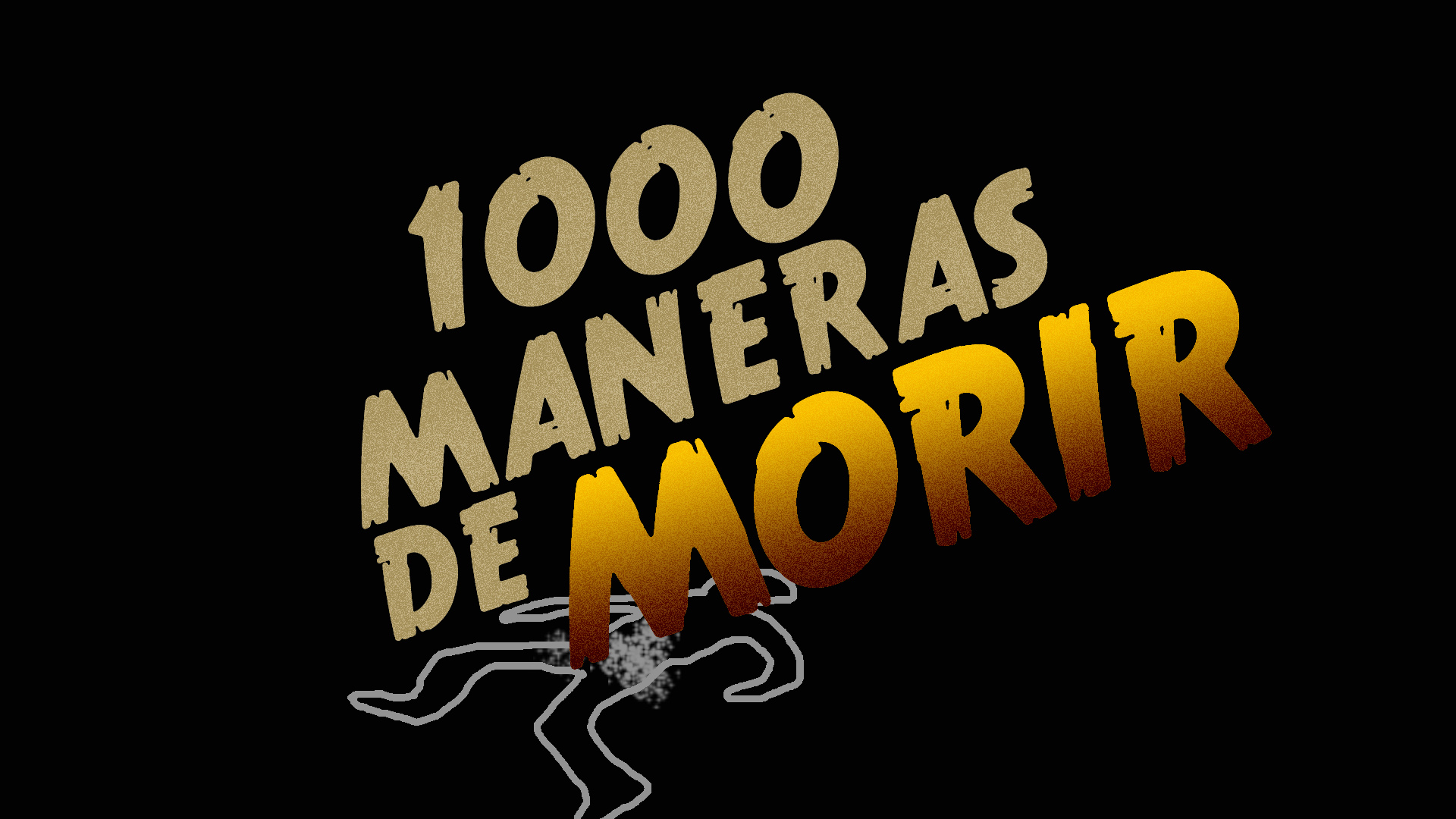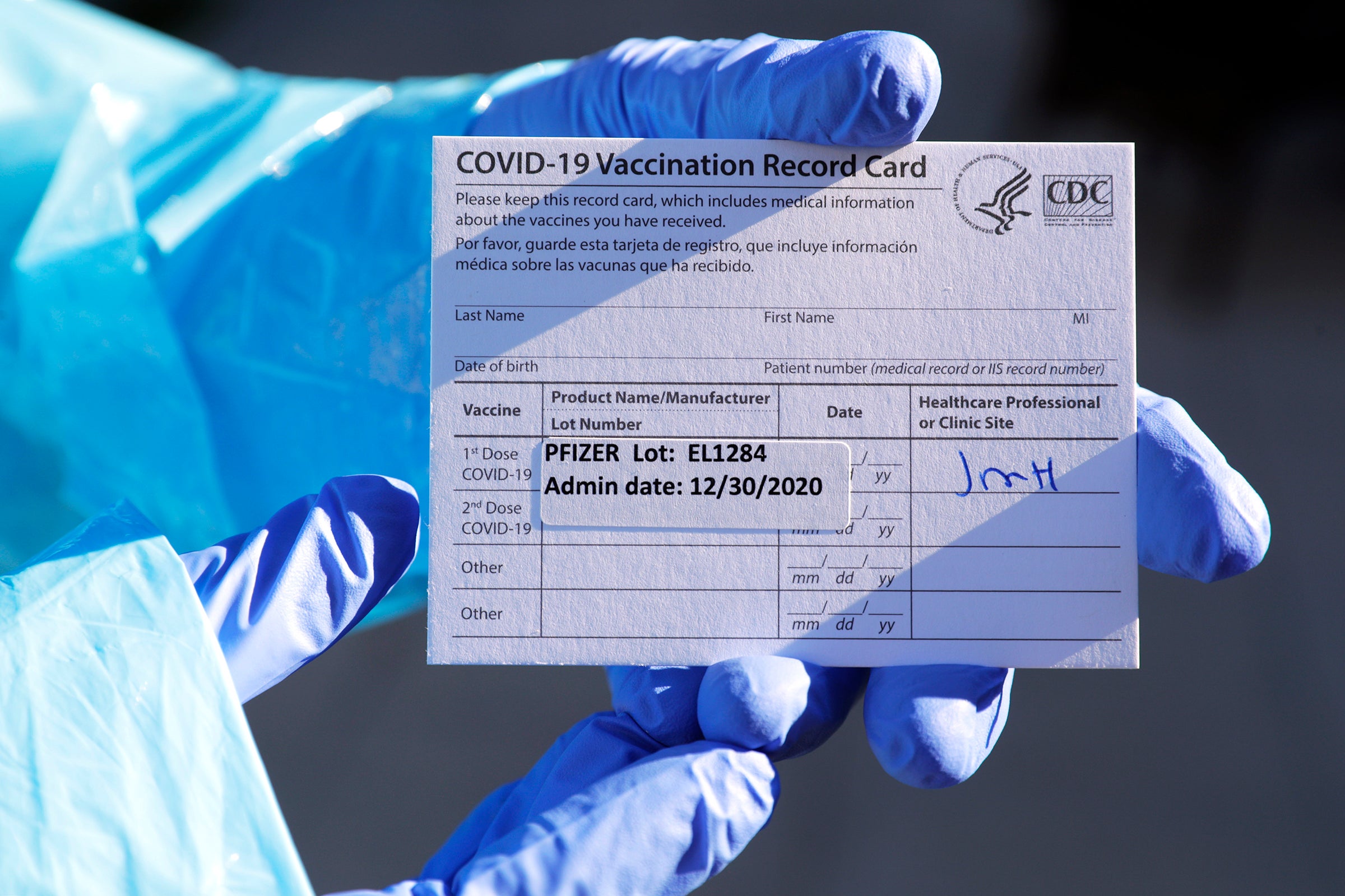Is 1000 Ways To Die - Understanding Everyday Numbers
Have you ever felt like numbers are playing a trick on you? Perhaps you've looked at a financial report, a recipe, or even just a simple measurement, and it just didn't quite click. It's almost as if there are a thousand different ways figures can be presented, sometimes leading to a little bit of confusion, or even a big headache, if we don't quite grasp what's going on. This feeling, that things could go wrong if we miss a detail, is that a familiar one?
We see numbers everywhere, from how much a company is worth to the exact amount of liquid needed for a project. And, you know, it's pretty common for people to scratch their heads over things like why a cubic meter is a thousand liters, or what the real difference is between increasing a number by a percentage and dividing it by a related decimal. These are the sorts of everyday puzzles that, in a way, make up the fabric of our numerical world.
This piece is going to explore some of those very situations, pulling examples from various places where numbers pop up, sometimes with surprising outcomes. We'll look at how understanding these small details can help us make sense of the bigger picture, helping us avoid those little numerical pitfalls that, quite frankly, can be a bit frustrating. So, let's take a closer look at some of these numerical scenarios.
- Celebrities Born In October 6
- Dua Lipa Nude Naked
- Louisiana Fatal Car Accident
- Trillian Wood Smith
- 1980s Mustache
Table of Contents
- Understanding Big Numbers - Are These Real Events for Your Money?
- The Mystery of Measurements - Different Ways to Measure Up?
- Odds and Outcomes - What Are the Real Events in Chance?
- Percentage Puzzles - Are There 1000 Ways to Miscalculate?
- Speed and Shortcuts - New Ways to See Performance?
- Health and Calories - The Real Events of Daily Intake?
- Tech Specs and Value - How Many Ways to Pick a Gadget?
- The Power of Community - A Way to Avoid Numerical Pitfalls?
Understanding Big Numbers - Are These Real Events for Your Money?
When you're looking at a company's financial records, like an annual report, you might notice something rather interesting. Often, the asset figures, or what the company owns, are listed "in thousands." This means that a number like "1" in the report actually represents one thousand. For instance, if a row shows "500," it truly means $500,000. It's a way, you know, to make very large numbers a little easier to read on paper, saving space and making the report less cluttered. Basically, it helps people get a quick sense of the scale without seeing an endless string of zeros.
This shorthand, sometimes called "k-notation," where 1000 is written as "1k" and 7000 as "7k," is quite common, especially in informal settings or online. It's just a quick way to communicate large amounts without spelling out all the digits. Knowing this is pretty important, because if you miss that "in thousands" note, you might think a company has far less money than it actually does. That, you know, could lead to a rather big misunderstanding if you're trying to figure out their financial health. So, it's a small detail that makes a very real difference.
Thinking about how numbers are put together, like how 25 times 4 gives you 100, which means two zeros, or how 125 times 8 gives you 1000, is pretty fundamental to understanding these large figures. It really depends on the factors of 2 and 5, since those are what make up our base-ten system. There are, you see, plenty of even numbers involved in getting to these round figures. It's almost like building blocks; small numbers combine in specific ways to create those bigger, rounder sums that are easier for us to process. This shows us that numbers, just like real events, have their own structure and patterns.
- New York Bus Sales
- Pottery Barn Wall Unit
- Black Loving Couple
- Naked Ladies Playboy
- No Matter How Hard I Try Youre Never Satisfied
The Mystery of Measurements - Different Ways to Measure Up?
One question that often pops up, and it's a good one, is why one cubic meter is equal to a thousand liters. It's a little bit confusing at first glance, especially since a cubic meter sounds like a space, and a liter sounds like a liquid amount. Well, a cubic meter is indeed a space, pictured as a cube that's one meter long, one meter wide, and one meter tall. That's a rather large box, actually. A liter, on the other hand, is a specific amount of liquid, often thought of as roughly the size of a large soda bottle.
The connection comes from how these units were defined. A liter was originally set up to be the volume of one kilogram of water at its densest point, which is pretty close to one cubic decimeter. Since there are ten decimeters in a meter, a cubic meter is like having ten cubic decimeters stacked up in each direction (10x10x10), which gives you a thousand cubic decimeters. And because one cubic decimeter is essentially one liter, then one cubic meter becomes a thousand liters. It's a bit of a chain reaction, you know, from how the units were first decided upon.
Understanding these sorts of conversions is, in some respects, quite important for all sorts of practical things, from cooking to construction. If you're mixing concrete or figuring out how much water a large tank can hold, knowing this relationship helps you avoid some rather messy or costly mistakes. It's one of those basic facts that, while seeming a little abstract at first, really helps you work with physical quantities in a very real way. So, knowing the different ways to measure helps us avoid, shall we say, a measurement mishap.
Odds and Outcomes - What Are the Real Events in Chance?
Let's talk about chance, like flipping a coin. If you play a game where getting heads means you win two dollars, and tails means you lose one dollar, what do you think will happen if you flip that coin a thousand times? You know, it feels like you should come out ahead, but by how much? This is where the idea of "expected value" comes into play. For a single flip, the expected value is pretty straightforward: you have a 50% chance of winning two dollars and a 50% chance of losing one dollar. So, on average, you'd expect to gain about 50 cents per flip.
Now, if you take that average gain of 50 cents and multiply it by a thousand flips, you'd expect to come out with about $500. This doesn't mean you'll exactly win $500; you might win more, or you might win less. But over a very large number of tries, the actual results tend to get closer and closer to that expected value. It's a fundamental principle of probability that helps us understand the long-term average outcome of random events. This is, you see, how casinos make their money; they set the odds so that, over many, many plays, the expected value is always in their favor.
So, even though each individual coin flip is completely random, when you look at a thousand of them, a pattern starts to appear. This concept applies to so many situations in life, from investing to insurance. It's a way of looking at the potential "real events" that could happen, not just in one instance, but over a long period. Understanding this helps you make more informed decisions when faced with uncertainty, and it's a bit like having a map for navigating the unpredictable nature of chance.
Percentage Puzzles - Are There 1000 Ways to Miscalculate?
Here's a common numerical puzzle: what's the actual difference between taking 1000 and multiplying it by 1.03, versus taking 1000 and dividing it by 0.97? For some reason, it feels like they should give you the same number, or at least be very close, especially if you're thinking about a 3% increase or decrease. But, actually, they give you different results. Multiplying by 1.03 is a direct 3% increase, so 1000 becomes 1030. Dividing by 0.97, however, is asking what number, when reduced by 3%, would give you 1000. That's a different question entirely.
This difference is pretty important when you're dealing with things like markups, discounts, or even calculating taxes. For example, if an item costs $1000 and you want to add a 3% sales tax, you multiply by 1.03. But if you know an item's price *after* a 3% discount is $1000, and you want to find its original price, you would divide by 0.97. The result will be slightly higher than 1030, because 1000 is 97% of a larger number. It's a subtle but significant distinction that, you know, can really impact your calculations.
It's easy to get these mixed up, and that's where a lot of people can run into trouble, especially when working with financial figures or trying to figure out pricing. This is one of those situations where understanding the precise wording of a problem, and how percentages truly work, can save you from a rather frustrating error. There are, you might say, many ways to approach percentages, and picking the correct one is key to getting the right answer for your "real events" in commerce.
Speed and Shortcuts - New Ways to See Performance?
When someone says something is "100% faster," what does that actually mean? Your first thought might be that it's twice the speed, so it takes half the time. And you'd be absolutely right! If a task used to take 10 minutes and now it's 100% faster, it means it's twice as quick, finishing in 5 minutes. But what about "1000% faster"? This is where it gets a little trickier. You might think it means eleven times the speed, so it takes 1/11 of the time. And, as a matter of fact, you'd be correct there too.
The trick here is that "X% faster" means you're adding X% *to* the original speed. So, 100% faster is the original speed plus another 100% of that speed, making it twice as fast. 1000% faster means the original speed plus another 1000% of that speed, which makes it eleven times as fast. This way of thinking about percentages, especially when it comes to speed or performance improvements, can sometimes trip people up. It's not just about the percentage itself, but how it relates to the baseline. It's a bit like a numerical riddle, you know.
This kind of numerical nuance also shows up in other areas, like the concept of "modulo." While the original text just mentions it, modulo is about finding the remainder after division, which is incredibly useful in computer science and other fields where patterns repeat. Understanding these sorts of mathematical concepts, even if they seem a little abstract, can help you grasp how systems work and avoid unexpected outcomes. There are, truly, many different ways to interpret numbers, and sometimes the simplest phrase can hide a complex calculation, just like in "real events."
Health and Calories - The Real Events of Daily Intake?
When we talk about health and diet, numbers become very personal. For instance, daily calorie intake is a pretty big deal for managing weight. We often hear about "calories" or "kilocalories" (which are often just called "calories" in everyday talk, with 1 kilocalorie equaling 1000 calories). The advice often given is that a sedentary woman might aim for 1000-1200 kilocalories a day for weight loss, down from a typical 1500, and a sedentary man might aim for 1500-1700 kilocalories, down from 2000. It's important to remember, though, that women should not go below 1000 kilocalories, and men not below 1200, as going lower can be, quite frankly, unhealthy.
Beyond calories, we also run into "kilojoules." There's a clear way to switch between these units: 1000 kilojoules equals about 238.9 kilocalories, and 1 kilocalorie is about 4.18 kilojoules. So, if you see a food label with kilojoules, you can easily figure out the kilocalories. These precise numbers are pretty vital for planning meals and understanding nutritional information, making sure you're fueling your body properly. It's a very practical application of numbers that directly impacts your well-being, you know.
These guidelines are not just random figures; they are based on general health principles to help people lose weight safely and sustainably. It shows how numbers, when applied to our bodies, become very real and have very direct consequences. Just like a financial report, getting these numbers right can help you achieve your goals and avoid health setbacks. It's one of the many ways numbers guide our everyday choices, sometimes in very important "real events" concerning our health.
Tech Specs and Value - How Many Ways to Pick a Gadget?
Thinking about buying a new phone? The market is, you know, full of options, especially in the 1000-2000 yuan price range, often called "thousand-yuan phones" in some places. These are typically entry-level models, but they still pack a punch. You'll see specifications like processors (maybe a Qualcomm Snapdragon 8s Gen4), camera pixels (like a 50-megapixel dual rear camera and a 20-megapixel front camera), memory (perhaps 12GB RAM and 256GB storage), and screen details (AMOLED with a 120Hz refresh rate). These numbers, basically, tell you a lot about the phone's capabilities.
The numbers aren't just for show; they indicate performance. A higher megapixel count generally means clearer photos, more RAM means smoother multitasking, and a higher refresh rate means a more fluid screen experience. When you're looking at these specs, you're trying to figure out the best value for your money, balancing what you need with what you're willing to spend. It's almost like a numerical puzzle to solve, trying to find the perfect combination of features within your budget. This is one of the many ways numbers help us make consumer decisions.
Even things like internet speed upgrades can be a bit of a numerical mystery. Someone might upgrade from 300 megabits to a gigabit (1000 megabits) but feel like the speed hasn't changed much. This can happen if other parts of their setup, like their modem or router, aren't also gigabit-capable, or if the cables aren't up to snuff.



Detail Author:
- Name : Prof. Amos Hintz Jr.
- Username : thea.sauer
- Email : keely24@boehm.biz
- Birthdate : 1989-08-19
- Address : 68101 Mack Lake Farrellchester, WV 81483-8667
- Phone : +1-253-289-4324
- Company : McKenzie-Conn
- Job : Welder
- Bio : Ipsum possimus repudiandae dolor ab dolores. Dolorem est est modi. Sed voluptatem dolorem accusamus expedita totam doloremque vitae.
Socials
linkedin:
- url : https://linkedin.com/in/jaylin.veum
- username : jaylin.veum
- bio : Doloribus quia quia totam aliquid.
- followers : 471
- following : 89
twitter:
- url : https://twitter.com/jaylin.veum
- username : jaylin.veum
- bio : Minus ratione mollitia quibusdam alias. Quibusdam quia delectus ut sunt qui officia. Ratione voluptatem nesciunt nemo officia. Ut magnam laudantium error id.
- followers : 2813
- following : 2869
facebook:
- url : https://facebook.com/jveum
- username : jveum
- bio : Laborum voluptatem rerum quis quis harum esse velit.
- followers : 405
- following : 2599
instagram:
- url : https://instagram.com/jaylin_veum
- username : jaylin_veum
- bio : Quasi odit quo ut error ut sed quam cum. Qui quam nihil quis nesciunt.
- followers : 4162
- following : 2974